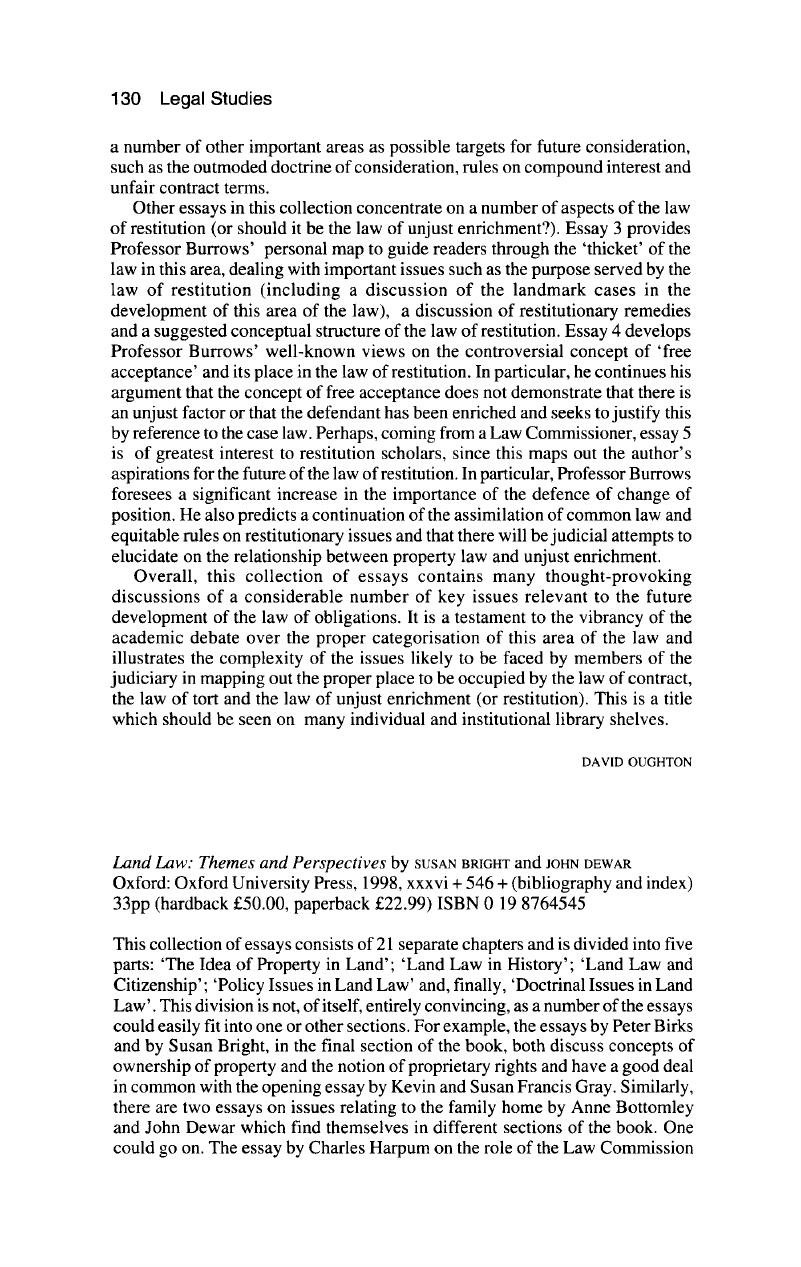No CrossRef data available.
Article contents
Land Law: Themes and Perspectives by Susan Bright and John Dewar. Oxford: Oxford University Press, 1998, 1998, xxxvi + 546 + (bibliography and index) 33pp (hardback £50.00, paperback £22.99) ISBN 0 19 8764545
Published online by Cambridge University Press: 02 January 2018
Abstract

- Type
- Book Review
- Information
- Copyright
- Copyright © Society of Legal Scholars 1999
References
1. Bright and Dewar, pp 2, 3.
2. As to the latter issue, see also the excellent essay by C G van der Merwe and J M Pienaar in P Jackson and D Wilde (eds) The Reform of Property Law (Aldershot: Dartmouth, 1997) ch 18.
3. See also C Reich (1964) Yale LR 733.
4. Bright and Dewar, pp 46–50.
5. Although it is not obvious that one needs to sign up to the Critical Legal Studies movement to find racist covenants objectionable: cf Alexander, p 64.
6. Cowan and Fiondi, pp 261–262.
7. (London: Butterworths, 1993).
8. Cowan and Fiondi, p 259.
9. Birks, p 459. See also the comments of Kevin and Susan Francis Gray at p 16.
10. Denzil Millichamp, ch 17.
11. Michael Caldwell, ch 16.
12. Christopher and Susan Bright, ch 14.
13. (1993) 109 LQR 263.
14. Bright and Dewar, ch 13. Interestingly, both exalt Waite LJ to almost saintly status, due to his decisions on Hammond v Mitchell (1991) 1 WLR 1127 and Midland Bunk v Cooke (1995) 4 FLR 564 with little recognition that his views may simply be wrong: see eg G Battersby (1996) 8 C & FLQ 261.
15. While many students would attest to the first part of his essay ‘Land Law is a complex subject. It is not in the end a very difficult one’: Bright and Dewar, p 457, one suspects they might not agree with the latter sentiment. This contribution does much to dispel the mystification of the subject.
16. See also on this point, the chapter by Alain Pottage, ‘Evidencing Ownership’.
17. (1965) AC 1175.
18. Dewar and Bright, p 541. This view is shared by Battersby, above n 13 at 506, who concedes at 504-505 that authority is against this view. One wonders, given the increased tendency to equate estoppel with constructive trusts (see eg Grant v Edwards (1986) Ch 638), why there should be such hostility to this. See also (1998) Law Com No 254, para 3.36.
19. See J Howell, in Jackson and Wilde, above n 2, ch 4.
20. Jackson and Wilde, above n 2, ch 9.
21. Clarendon Press: Oxford, 1993.
22. This classification is then used as a peg upon which to hang a critique of immigration law and Lord Tebbit's notorious ‘cricket test’: Bright and Dewar, pp 249–250.
23. Bright and Dewar, p 247.
24. Bright and Dewar, pp 241–242.




